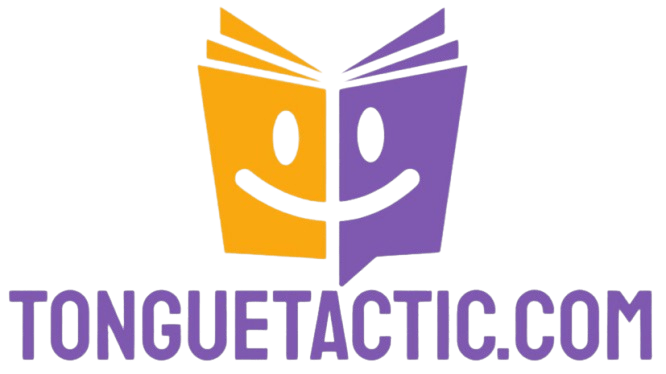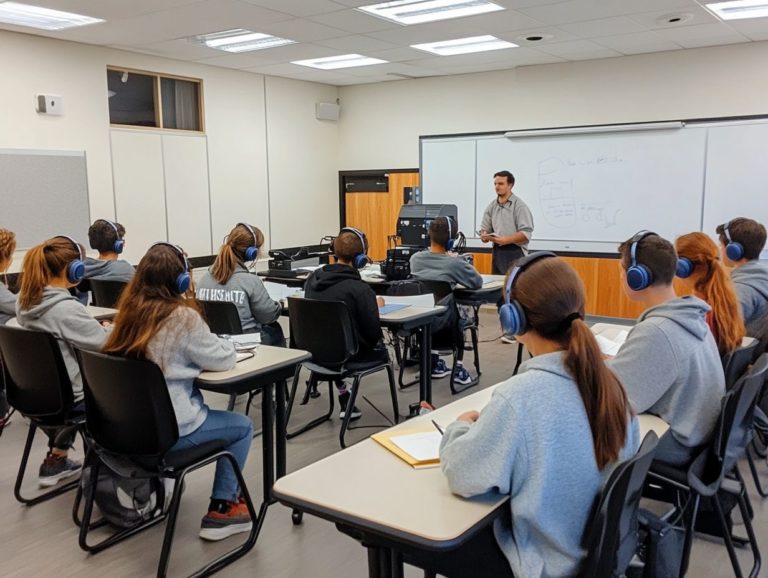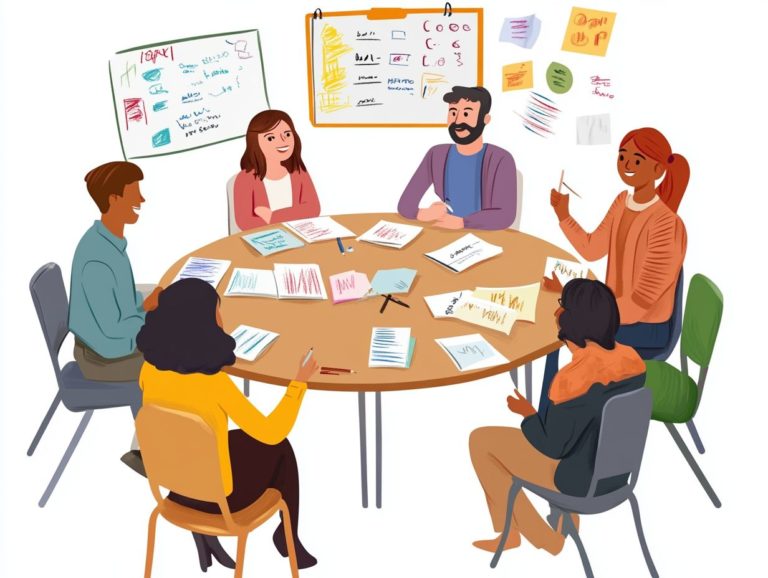the benefits of teaching what you learn
Teaching what you learn is an incredibly powerful practice. It not only enriches you as an educator but also elevates the learning experience for your students.
This article delves into the many benefits for both teachers and learners. Sharing your knowledge can deepen understanding and retention, enhance communication skills, and inspire confidence and critical thinking within your students.
Discover how to identify your areas of expertise, select the right audience, and craft engaging lesson plans. Unlock the transformative impact that teaching can have on you and those you guide!
Contents
Key Takeaways:
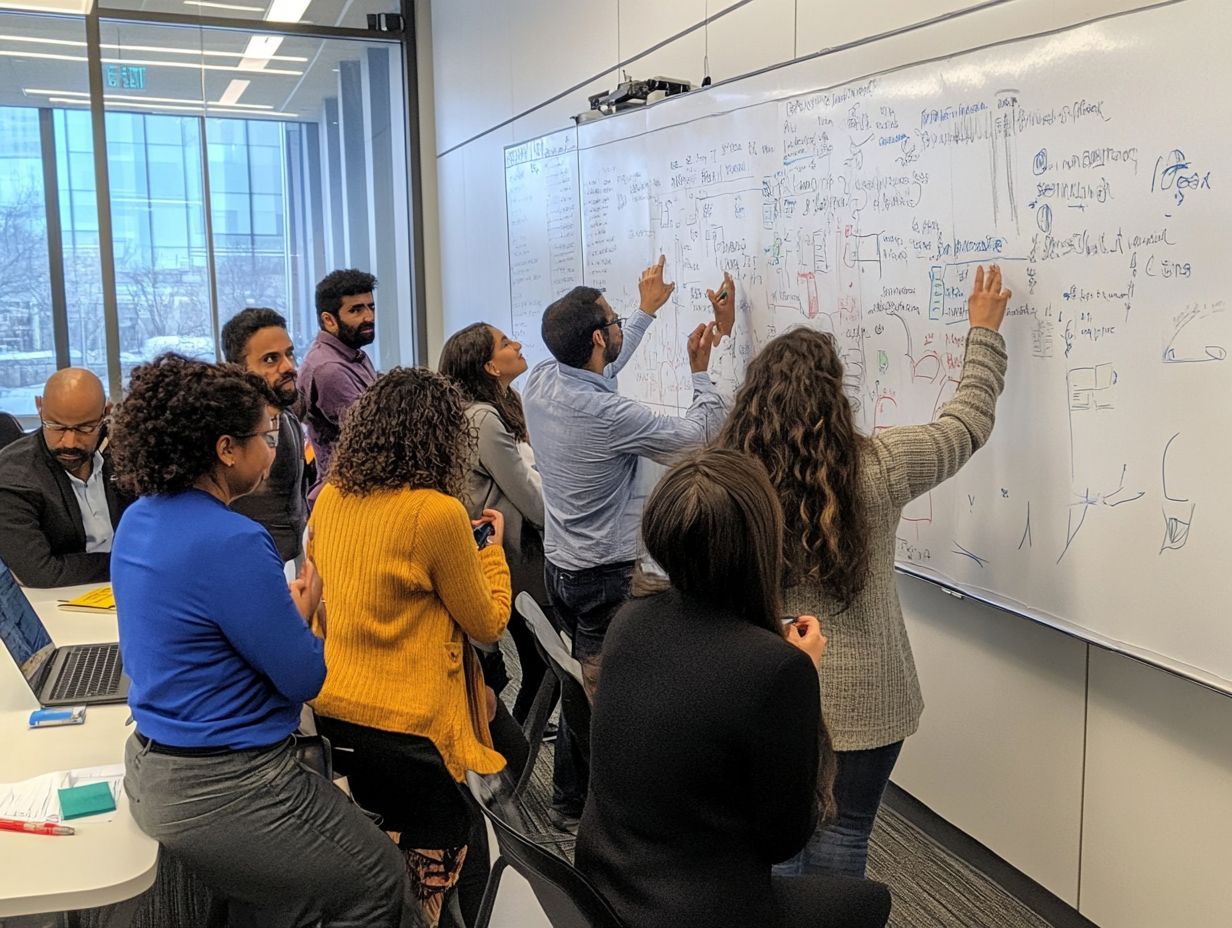
Teaching what you learn can enhance your understanding and retention of the subject matter. It makes you a more knowledgeable and confident teacher. It can also improve your communication skills as you learn to effectively convey complex ideas clearly and concisely. By teaching others, you can help them improve their critical thinking skills and build their confidence and motivation to continue learning.
What is Teaching What You Learn?
Teaching what you learn is a dynamic educational approach. It taps into the idea that teaching helps you learn better. By imparting knowledge to others, you not only reinforce your own understanding but also deepen your comprehension and foster active engagement in the learning process.
This approach helps you succeed academically. As you teach, you refine your communication skills and build a solid foundation in cognitive psychology, enabling you to construct knowledge effectively while promoting lifelong learning. This practice is built on strategies that create an exciting and collaborative classroom!
In the context of classroom discussions, such as those led by Ms. D Angelo, you experience firsthand how the prot g effect creates a more profound connection to the material. When you explain concepts to your peers, it stimulates critical thinking and encourages collaboration, greatly influencing your cognitive development.
Effective teaching methods that embrace this approach not only enhance retention but also cultivate a sense of community, motivating you to participate actively. Platforms like PowerMyLearning support this process by providing resources that facilitate peer-to-peer teaching, ensuring you engage with others while solidifying your grasp of essential content.
Benefits for the Teacher
Teaching others offers amazing benefits that go beyond the classroom. It provides invaluable opportunities for both personal and professional growth.
By employing effective teaching strategies, you can deepen your own understanding of the subject matter while cultivating a positive classroom environment that actively promotes student engagement.
This reciprocal relationship not only aids in knowledge retention but also enhances your overall teaching methods and contributes to your ongoing professional development initiatives.
Improving Understanding and Retention
Improving your understanding and retention by teaching others is an incredibly powerful educational strategy. It fosters a deep comprehension of subjects.
When you take on the role of a teacher, you re often prompted to reflect on your own knowledge. This enhances your cognitive development and encourages metacognitive processing. This method not only supports long-term retention but also aligns seamlessly with effective learning strategies that accommodate various learning styles.
To elevate this invaluable technique, you can implement interactive assignments that promote collaboration among your peers. By facilitating peer tutoring, you create an environment where insights are shared and concepts clarified, reinforcing everyone’s understanding.
Research by Richard E. Mayer emphasizes the effectiveness of active engagement in learning. He suggests that well-structured homework assignments can cement your understanding by offering opportunities for self-directed practice.
Incorporating strategies like gamification or group discussions can transform your learning experience into something more dynamic and memorable. Ultimately, this enhances both your comprehension and retention.
Start sharing your knowledge today and see just how much you can grow!
Developing Communication Skills
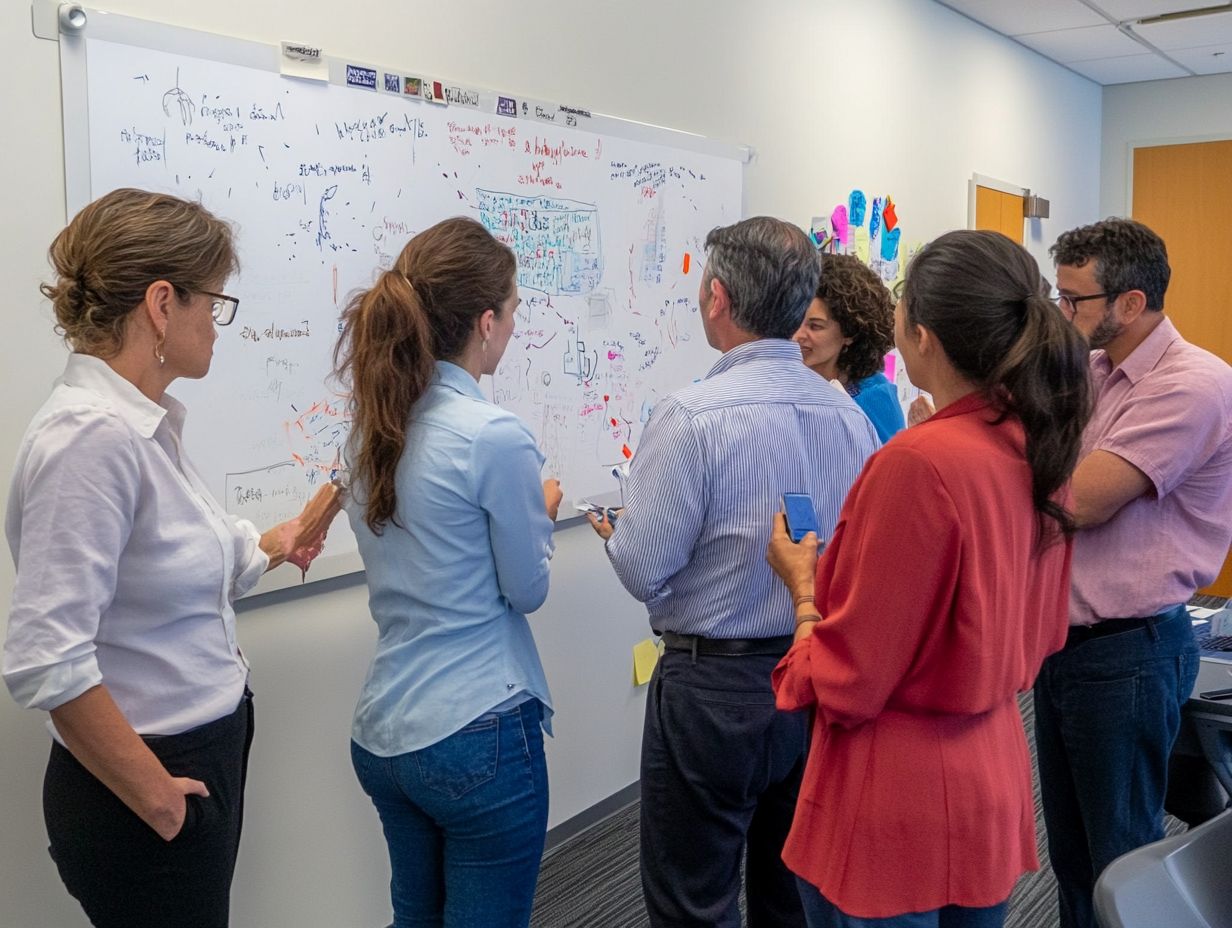
Developing your communication skills is a crucial aspect of teaching others, enabling you to express thoughts clearly. Engaging in oral presentations and classroom discussions not only strengthens your relationship with students but also cultivates leadership qualities among them.
As individuals share knowledge, they refine their communication abilities, which are essential in both academic and real-world contexts. To nurture these skills, consider employing collaborative projects that create an interactive learning environment. In such settings, students must convey ideas and engage in meaningful dialogue.
As an educator, you play a pivotal role in this journey by providing constructive feedback that encourages learners to reflect on their communication styles and identify areas for improvement. Incorporating active listening exercises inspired by thinkers like Virginia Woolf and poets such as John Keats can enrich understanding, allowing students to appreciate diverse perspectives.
By emphasizing these methods, your teaching process enhances the classroom experience and equips students for effective and empathetic communication beyond school walls.
Benefits for the Student
The benefits of teaching what you learn profoundly impact students, amplifying their engagement and cultivating a strong sense of self-efficacy.
When you actively participate in teaching others, you not only boost your own motivation to learn but also sharpen the critical thinking skills vital for academic achievement.
This method creates a collaborative learning atmosphere where peer tutoring and interaction become essential components of the educational experience.
Enhancing Learning and Critical Thinking
Enhancing your learning and critical thinking by teaching others is a fundamental benefit that gives you the power to take ownership of your educational journey. This approach encourages you to actively construct knowledge and apply educational strategies that elevate your analytical skills.
As you engage in discussions, you develop essential skills that help you understand and manage your emotions and relationships, which are vital for real-world applications. By stepping into teaching roles, you not only solidify your understanding of complex concepts but also sharpen your problem-solving skills.
This collaborative environment fosters creativity, allowing you to connect ideas across different subjects and draw on classroom innovations that make learning more dynamic and interactive.
As you explain concepts to your peers, you refine your own comprehension and gain a richer perspective on various disciplines, ultimately leading to a more holistic educational experience.
Building Confidence and Motivation
Building confidence and motivation in students is a pivotal advantage of the learning-by-teaching approach, giving them the power to take ownership of their educational experiences. When you teach others, you begin to recognize your own abilities and knowledge, fostering significant self-reflection and improvement in group dynamics.
This nurturing environment sparks a powerful cycle of motivation to learn that benefits everyone involved.
Integrating interactive assignments and collaborative projects, educators craft a classroom atmosphere that promotes active student participation. These strategies enhance learning and cultivate essential skills that extend well beyond the classroom walls.
Providing timely and constructive feedback helps students understand their progress and identify areas for improvement, further reinforcing their sense of competence.
This holistic approach not only boosts current confidence but also lays the groundwork for lifelong learning, equipping students with the mindset necessary to adapt and thrive in various situations.
How to Start Teaching What You Learn
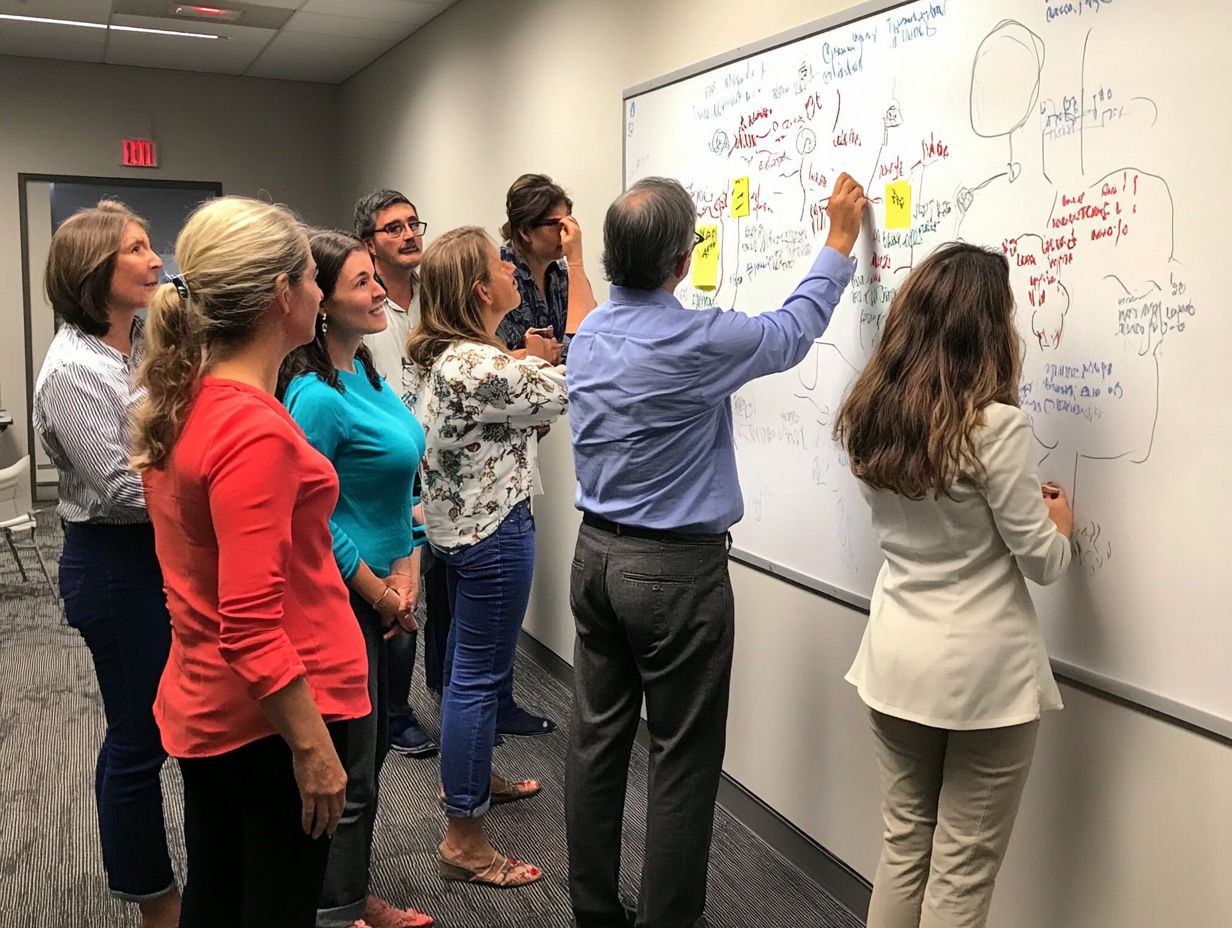
Embarking on the journey of teaching what you learn requires a deliberate approach. Begin by pinpointing your areas of expertise and consider how best to convey that knowledge to your audience.
By reflecting on teaching methods that align with your students’ needs, you can cultivate an enriching environment that fosters meaningful classroom discussions and project-based learning.
This thoughtful exchange allows both you and your students to leverage each other s strengths, creating a dynamic and engaging educational experience.
Identifying Your Areas of Expertise
Identifying your areas of expertise is the crucial first step toward effective teaching. This focus allows you to dive deep into subjects where you can build knowledge and share it in a meaningful way.
Self-awareness boosts your confidence and shapes your teaching strategies. Engage in self-assessment and seek feedback from peers to clarify your strengths.
To better understand your strengths, engaging in self-assessment techniques can prove immensely beneficial. By reflecting on past experiences and evaluating your personal interests, you can pinpoint your unique contributions to cognitive development.
When you combine these methods with community engagement initiatives, you can develop enriched educational strategies that foster a collaborative atmosphere, promoting growth not just for you, but also for the students you serve.
Choosing the Right Audience
Choosing the right audience is essential for maximizing engagement. Understand their demographics, interests, and needs.
Employing strategies such as surveys or informal discussions allows you to gauge student preferences and adjust your lessons accordingly. This assessment fosters a sense of belonging among the learners.
By emphasizing the importance of self-efficacy, you can utilize peer tutoring and collaborative projects to inspire confidence. These interactive techniques engage learners and cultivate essential skills for lifelong learning.
Tips for Effective Teaching
Effective teaching is all about creating lively lessons that grab your students’ attention. Use a mix of exciting learning strategies to spark interest and foster community involvement.
This approach empowers students to take ownership of their learning journeys through engaging oral presentations and collaborative activities.
Creating a Lesson Plan
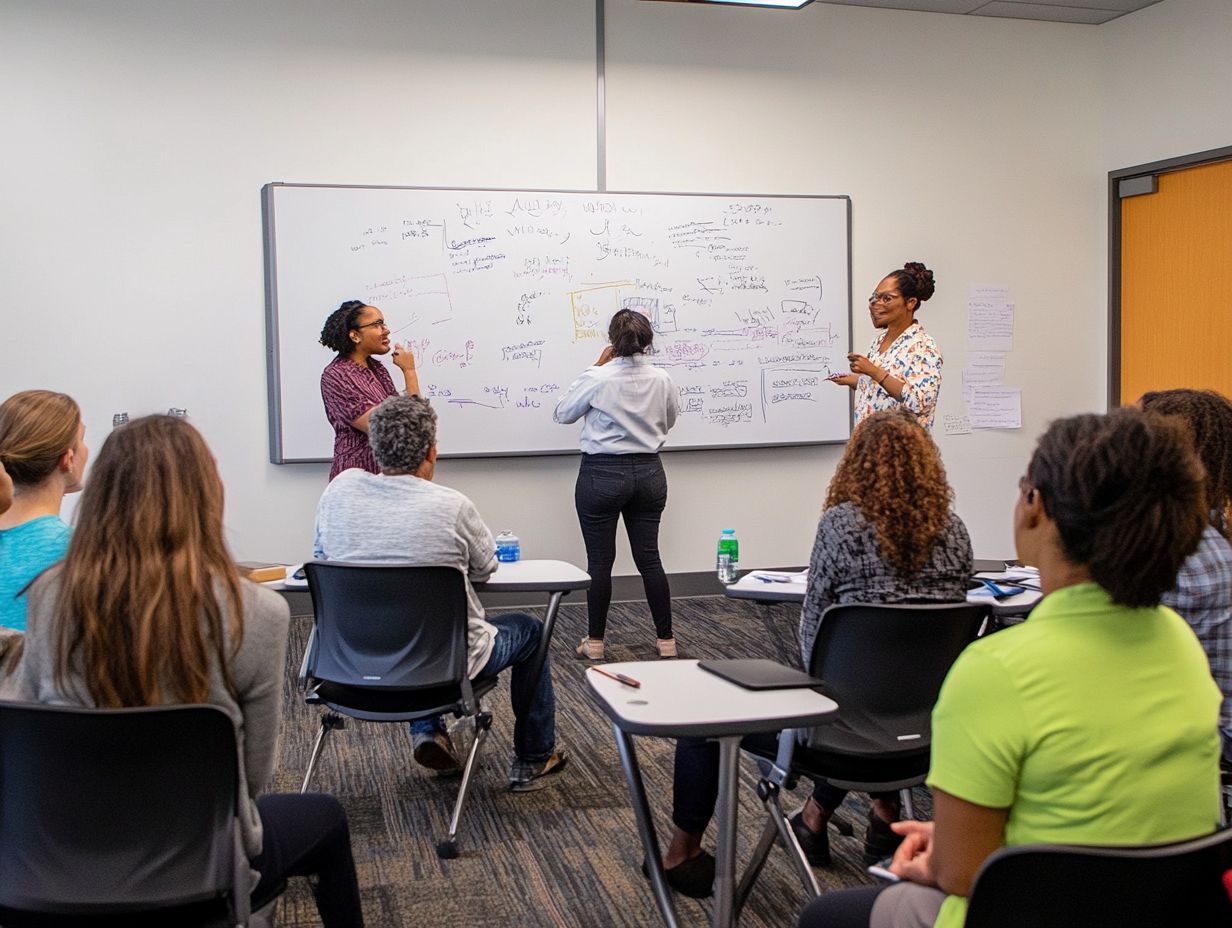
A well-crafted lesson plan acts as your roadmap, guiding you and ensuring structured learning. It should include clear objectives and engaging activities.
Key components of your plan should include clearly defined objectives aligned with basic learning principles, helping students grasp their learning targets.
Integrating methods to evaluate students understanding during and after lessons is crucial for enhancing the student-teacher relationship. By weaving these elements together, you can construct a dynamic lesson plan that resonates with students and encourages deeper learning.
Engaging and Encouraging Students
Engaging and encouraging students is crucial for creating a good learning space where participation and enthusiasm flourish. By employing various encouragement strategies, such as interactive assignments and dynamic classroom discussions, you encourage students to learn actively. This strengthens the connection between students and educators.
Incorporating techniques that boost communication skills creates a vibrant space where students feel at ease expressing themselves. Thinking about your own experiences promotes personal growth and enriches social-emotional learning, making it easier for students to forge connections with their peers.
Integrating team projects or peer-led discussions gives power to students. This enables them to develop leadership qualities while benefiting from each other s perspectives. This collaborative approach nurtures academic success and contributes to a supportive community where every individual feels valued and inspired to learn.
Frequently Asked Questions
What are the benefits of teaching what you learn?
- Improves retention and understanding: Teaching what you have learned solidifies your knowledge and helps you understand the subject better.
- Enhances communication skills: Explaining concepts to others requires effective communication skills, which can be developed through teaching.
- Boosts confidence: Teaching what you know can increase your self-confidence and self-esteem, as you become more knowledgeable in the subject.
- Strengthens critical thinking: Teaching requires you to think critically and creatively, which can improve your problem-solving skills.
- Fosters a sense of responsibility: When you teach others, you take on the responsibility to present accurate information and help them understand it.
- Creates a positive impact: Sharing your knowledge and helping others learn can make a positive impact on their lives, making teaching a rewarding experience.
